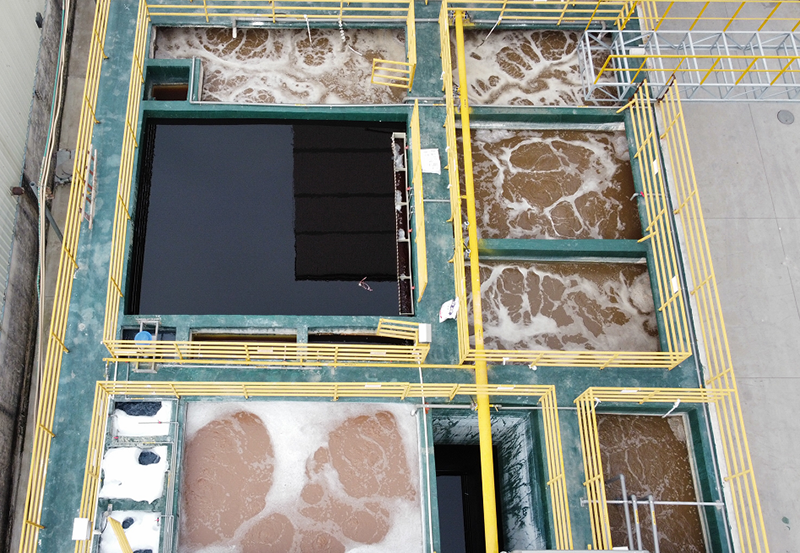
The biological treatment of phosphorus containing wastewater is gradually formed and improved on this basis.
At present, there are three commonly used biological dephosphorization technologies abroad:
First, adding coagulant to aeration reservoir for dephosphorization; Secondly, in the treatment of soil, orthophosphate ions will react with Fe and Al oxides in soil or replace with 0h- or sio22- in clay to form insoluble phosphate compounds. The third method is activated sludge process, which is the most widely used biological dephosphorization technology at home and abroad. Biological phosphorus removal method has good treatment effect, without the disadvantage of difficult treatment of sludge by chemical precipitation method, and there is no need to add precipitant. For the two-stage activated sludge process, the biological phosphorus removal effect can be achieved by changing the operation process without adding a large number of equipment. However, strict management is required. In order to form VFA, the anaerobic conditions in the aerobic stage should be ensured.
2. chemical precipitation method
By adding chemical precipitant and phosphate in wastewater to form insoluble sediment, phosphorus can be separated, and the formed flocs can also adsorb and remove phosphorus. Commonly used coagulant and precipitant include lime, Mingji, gasified iron, mixture of lime and gasified iron, etc. The main factors affecting such reactions are pH, concentration ratio, reaction time, etc
3. Bio enhanced phosphorus removal
Phosphorus accumulating bacteria are widely used in biological enhanced phosphorus removal, which is also the main research direction of biological phosphorus removal at present. Phosphorus accumulating bacteria, also known as phosphorus uptake bacteria and phosphorus removal bacteria, are a special kind of bacteria in the traditional activated sludge process. Under aerobic conditions, they can absorb excessive phosphorus in sewage into the body, making the phosphorus content in the body several times higher than that of ordinary bacteria. These bacteria are widely used in biological phosphorus removal.
4. Adsorption method
In the 1980s, porous materials as adsorbents and ion exchangers have been used in water purification and pollution control.
5. Other phosphorus removal methods
The new dual sludge nitrogen and phosphorus removal process system has achieved success in the treatment of domestic sewage. Traditional nitrogen and phosphorus removal processes mostly use single sludge system, so there is a contradiction between nitrification and phosphorus removal sludge age. The combination of activated sludge process and biofilm process can solve this problem.

